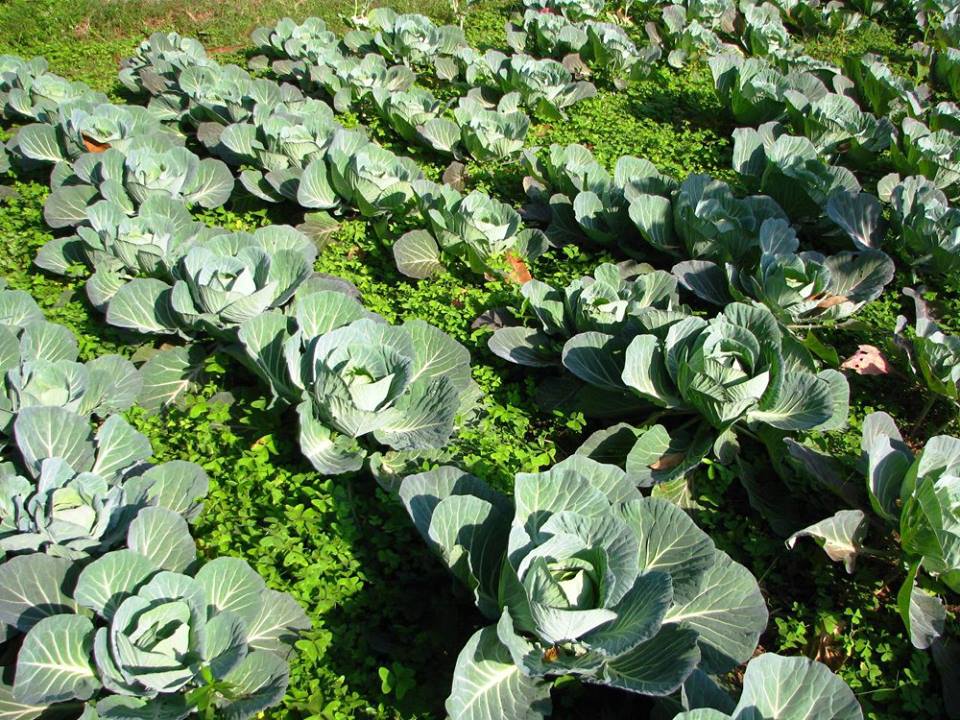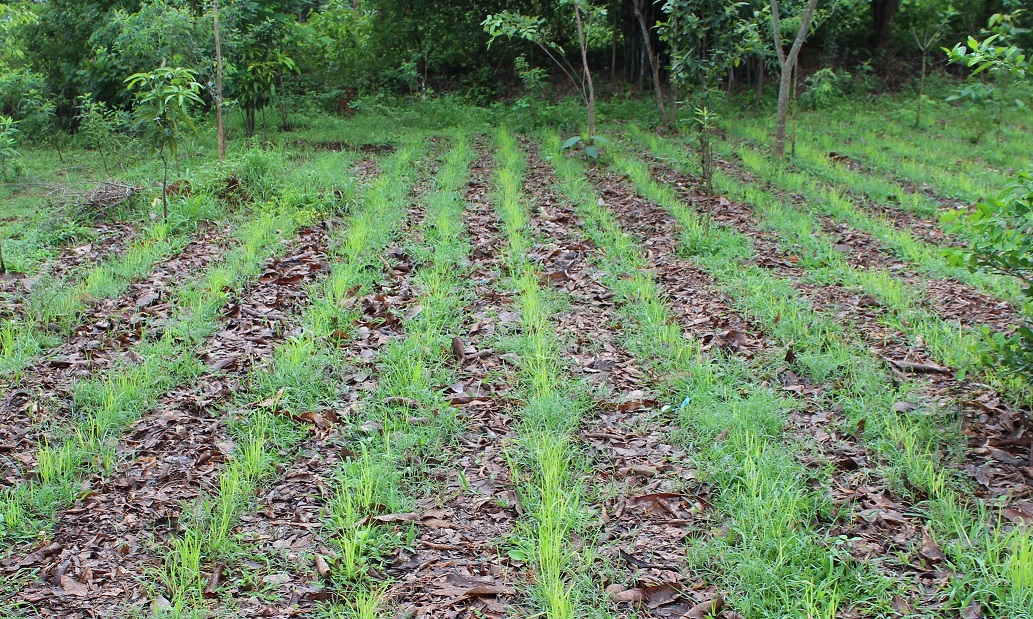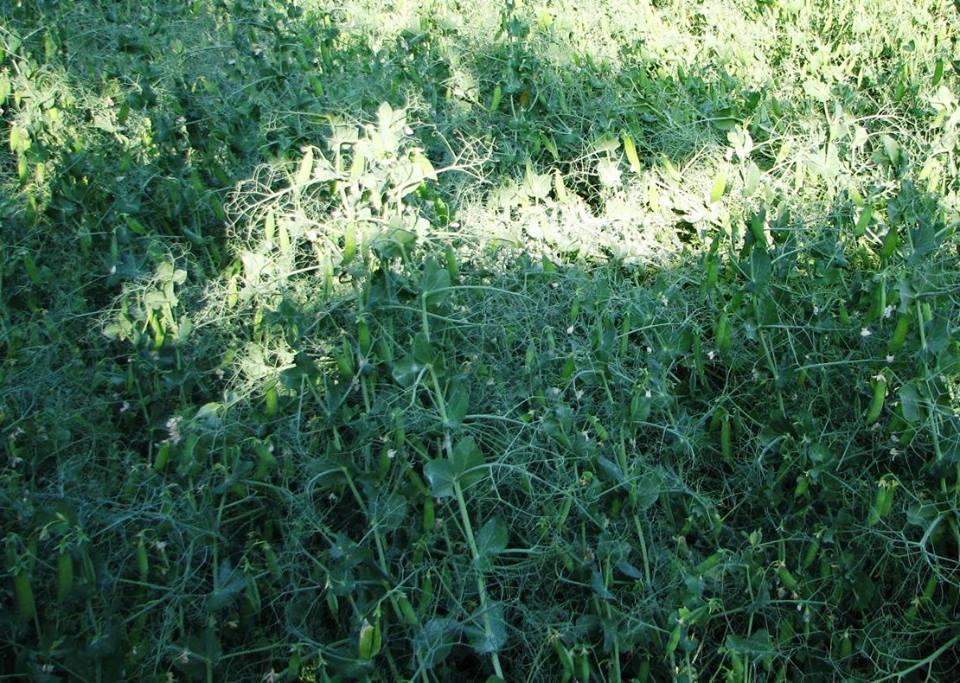Industrial agriculture requires the use of chemicals which often cause us harm, reduce the nutritional value of the foods we eat and damage the soil. Using chemicals leads to more pest attacks on crops for which farmers rely on pesticides. In addition, because of soil damage more and more chemicals and pesticides need to be used. In the bigger picture, it is the farmer who falls into a vicious circle of poverty while the fertiliser and hybrid seed manufacturing MNCs make billions of profits each year across the world.
In a country like India where 70 percent of the population depends on agriculture to sustain their livelihood, farmers are becoming more helpless day by day – the increasing rate of suicide amongst farmers in the last decade is just one example of it. I have been working with the indigenous farming communities in India and Cameroon and have seen ever increasing threats due to the introduction of chemical inputs and GM crops. On the other hand, the agriculturist and scientist communities claim major breakthrough for developing GM crops largely ignoring the traditional wisdom of the farmers and the local crops which have sustained their livelihood since generations.
To make the situation worse, recurrent natural calamities are playing havoc with the farmers harvests. For instance, frequent landslides severely damage the paddy land. Farmers are not able to cope with the effects of ever increasing climate change and their subsistence farming is no longer providing enough food to feed their family. As if farmers have become orphans in their own land.
In the hinterlands of India, indigenous small farmers practice organic agriculture on their hills and sloped lands, which does not cause harm to us, but it often depletes the soil. As a result, the farmer cannot cultivate the same land after one or two years. Now, a stage has been reached in many parts of Koraput and Kalahandi districts of Odisha in India, where farmers are not able to cultivate their land even after it has remained fallow for five to seven years or even more. The overall yield in these regions is going down very markedly, and indigenous communities are no longer able to have any food security from agriculture.
So what could be a possible alternative?
Masanobu Fukuoka rejected both modern agribusiness and centuries of agriculture lore. He suggested four fundamental principles of natural farming, such as no chemical fertiliser, no weeding by tillage, no herbicides, and no dependence on chemicals. Fukuoka, a proponent of natural farming who successfully raised rice, winter grain and citrus crops without ploughing his fields for more than thirty years.
“By expanding our intellect beyond the traditional confines of scientific knowledge and by trusting the inherent wisdom of life processes – we can learn all we need to know about growing food crops” emphasised Fukuoka. A farmer, he says, “Should carefully watch the cycles of nature and then work with those patterns, rather than try to conquer and tame them”.
In recent years the experience of Fukuoka has been widely validated; it is estimated that natural farming or no-till farming practices are currently being used to farm 250 million acres of land worldwide, and in 2007 a University of Michigan study projected that overall food availability could increase by about half if the whole world moved to ecological sane farming. Scientists at the University of North Carolina are using plants against plants. By incorporating allelopathic species (which release chemicals to fight off neighbours) as cover crops in conjunction with no- till plantings, they are having great success at controlling weeds.

Cultivating Cabbage with no tillage method while live weeds providing the much needed moisture to the main crops, Pic: Abhijit Mohanty
Natural farming is a method of cultivation that seeks to replicate nature to grow the crops we require. In nature, a forest remains for 100 of years or even more, unless human beings destroy it. The plant in the forest grows continuously, and a cycle of “life-death-decomposition-life” continues. The seed of every plant we grow today came from the forest since millennia. Everything that comes out of the soil again goes back to the soil in one form or another. Therefore we need to learn from “mother nature” and her forests.
Methods of natural farming
We will discuss the basic methods of natural farming. All these methods have been tried out, by 100s of farmers in different places in India, especially in the rainfed regions and have helped them get more production with minimal external inputs. Since rainfed agriculture is mainly practiced by indigenous farmers, so if we manage the rainfed land in the tribal areas, then we shall have substantial food security.
Let’s start with the land preparation. For centuries, farmers have assumed that the plough is essential for growing crops. However, non-cultivation is fundamental to natural farming. The earth cultivates itself naturally by means of the penetration of plant roots and the activity of microorganism, small animals and earthworm.
The next comes a proper fencing. Cattle proof fencing should be made around the land. This can be done with poles and twigs. Inside this lantana or other fast growing non-browsable species of fencing material should be planted, so that there is a permanent live fencing. Fence or hedgerow has lot of value as bio-mass, firewood, soil stabilisation, checking erosion, wind break, apart from preventing entry of cattle. Once the live fence is established, then, valuable trees can also be grown along the border, to provide timber, fire-wood, fruits, etc.
When we grow crops, we clean the land of all weeds, leaves, and other matter, and then sow the seeds. While the crops are growing, we frequently remove the weeds, and turn the soil cover to expose the soil to sunlight and air. However, in nature, the soil is always covered with leaves, grass, sticks and other plant matter. And yet, seeds sprout from underneath this cover, and produce the maximum yield. Weeds play their part in building soil fertility and in balancing the biological communities as well.
Take the instance of Mulching which plays a very important role in increasing the natural fertility of the soil. It helps to preserve the soil moisture, around 70 per cent of the soil moisture is preserved with a good mulching. It decomposes, and provides compost with little effort. Mulching also increases the earthworm population of the soil. We do not have to make separate vermi compost bins. There should be enough mulch to cover the soil completely. Straw, leaves, cut grass can be used for mulching.
Increasing soil micro-organisms is also very important. For instance “Jivamrut” which is used to increase the soil micro-organisms. It is not manure in itself, but it will act to increase the action of the manure like cow-dung, compost, etc. The required ingredients for the preparation of Jivamrut are cow-dung (10 kgs), cow urine (5 to 10 litres), jaggery (1 to 2 kgs) pulses like arhar, mung, biri (1 to 2 kgs), compost (handful) and water (200 litres). Mix all these ingredients and allow to ferment for 2 to 3 days, covered with cloth or jute sack. Twice a day stir it well in a clock-wise direction. This mixture should be used within 7 days. The Jivamrut can be put in the irrigation channel to reach the plant roots with the irrigation water.
Similarly, “Ghana Jivamrut” is a dry form, and can be sprinkle on the land with cow-dung. The ingredients for making Ghana Jivamrut are cow-dung (100 kgs), jaggery (1 to 2 kgs), arhar powder (1 to 2 kgs), compost (handful) and cow urine (100 to 500 ml). Mix all the ingredients well and add a little cow-urine in the mixture, so that the Jivamrut gets a good consistency. This can be mixed with the cow-dung and spread over the seeds after sowing.
Seed preparation
Before sowing, seed preparation is a must. Because, it helps the seeds to germinate faster, and become strong plants. It prevents diseases and insect attack on the seed and seedling. Several types of seed preparation is possible out of which “Bijamrut” can be used for all grains and seeds. The ingredients for “Bijamrut” are water (20 litres), dried cow-dung (5 kg) cow-urine (5 litres), lime (100 grams) and compost soil (200 grams). Mix all the ingredients well in a bucket and leave for 24 hours. Stir twice during this time in clock-wise direction only. The Bijamrut is ready now. Take the quantity of seed you require, sprinkle this solution on the seed, and rub and mix seeds with Bijamrut nicely. Dry in shade.
Many plants are eaten by cattle. When we use the dung of the cattle on the fields, the seeds which have passed through the intestine of the cow, germinate once again, and have strong growth, and give very good yield. This is nature’s own method of ensuring propagation of the plants.
The seed preparation for millets needs ingredients such as fresh cow-dung (1 kg), compost soil (1 kg), seed as required and dry soil or ash, or mixture of soil and ash (5 kgs or as required). The first step is to mix cow-dung and soil well. Sprinkle seed on this mixture, and mix well. Heap this mixture on a sack, cover with another sack or leaves and leave overnight. Following day, rub the seeds and cow-dung mixture with dry mud and ash mixture, till the whole mixture becomes dry and crumbly. Each seed will be coated with bits of cowdung, mud and will be ready for sowing. Sow in prepared field immediately.
Now let’s discuss the seed preparation of paddy. It has two methods, one for the nursery and another for direct sowing of upland paddy. For nursery, take 1 to 2 kg of fresh cow dung and 2 litres of cow-urine and dilute with 5 litres of water. Soak 10 to 15 kg of seeds that are previously soaked in water for 10 to 12 hours, in this cow-dung extract for 5 to 6 hours. Dry the seeds in shade before sowing in the nursery. Soaking the seeds in cow-dung extract enhances the germination capacity. And for direct sowing of upland paddy, mix paddy seeds with cow-dung before sowing. The cow-dung covering the seeds will protect them from birds and other insects in the nursery and also acts as a manure for seeds. This practice increases the drought resistance and acts as a seed hardening measures. It is generally preferred for dry land paddy cultivation.
Sowing the seeds
For millets, seeds treated with Bijamrut and dried in the shade should be shown one week before the onset of monsoon. Broadcast the seeds on land where grass has been cut. Ensure that the seeding is 10 per cent to 20 per cent more than what is usually practiced. This will help to control the weeds. Cover with one layer of cow-dung mixed with Ghana Jivamrut. While spreading cow-dung, and other mulch, take care not to walk directly on cow-dung. After that, cover the cow-dung with a layer of leaf/grass/straw mulch, once the soil has a mulch of straw or grass, etc, you can step on it. But take care not to walk too much on areas where you have sown your seeds.
Pulses should be sown by dribbling in a straight line. It is also a good practice to sow pulses like arhar in rows five feet apart, in between the rows of millets. The intra-line spacing should be three feet and inter-line spacing should be five feet. Once pulses have been sown, spread cow-dung, and Ghana Jivamrut mixture, and mulch with grass or leaf. Paddy should have line sowing with six inch spacing to control weeds. Once again spread cow-dung and Ghana Jivamrut mixture and mulch with grass or leaf.
One month after sowing, mix 5 litres of Jivamrut on 100 litres of water, strain with cloth, and spray on crops. Three weeks after the first treatment, take 10 litres Jivamrut with 150 litres water to be strained and sprayed. Continue third and fourth treatment with Jivamrut every three weeks subsequently. Weeding should be undertaken one month after sowing. However, if plant coverage is good, and weed growth is slow, then there is no need for weeding. Only one weeding is required. Do not remove weeds and throw them on the bunds. Pull weeds out, and put them back where they came from. This way, the weeds themselves will reduce the weed growth, and also help to maintain soil moisture.
Discussion
In a 1982 interview with Mother Earth News, Fukuoka said that “The real path to natural farming requires that a person know what unadultered nature is, so that he or she can instinctively understand what needs to be done and what must not be done to work in harmony with it processes. One must simply know nature, real nature, not the one we think we know”.
Nature can do the work we have unnecessarily taken on ourselves, so what Fukuoka terms “natural farming” is less labour intensive. “Successful farming is about realising more leisure in which to experience the richest of relationships, about living in ways that are gentle and easy. We can enjoy sitting back and even being lazy” writes Fukuoka. Successful agriculture requires not so much arduous labour as awareness, observation, connection and persistence.
The ultimate goal of farming Fukuoka says “Is not the growing of crops, but the cultivation and perfection of human beings”. And he speaks of agriculture as a way “To be here, caring for a small field, in full possession of the freedom and plenitude of each day, everyday – this must have been the original way of agriculture”. An agriculture that is whole nourishes the whole person, body and soul. After all, we do not live by bread alone.
Chemical companies have a tremendous vested interest towards natural or organic farming, and powerful vested interests are actually determining our nation’s agricultural policies which best suits to boost their profit. The focal issue is that if we want to ensure conservation, it is imperative to develop from the soil upward. Is not it ?
Author
Abhijit Mohanty is a Delhi-based development professional. He have extensively worked with the indigenous communities in India and Cameroon.



No Comments Yet